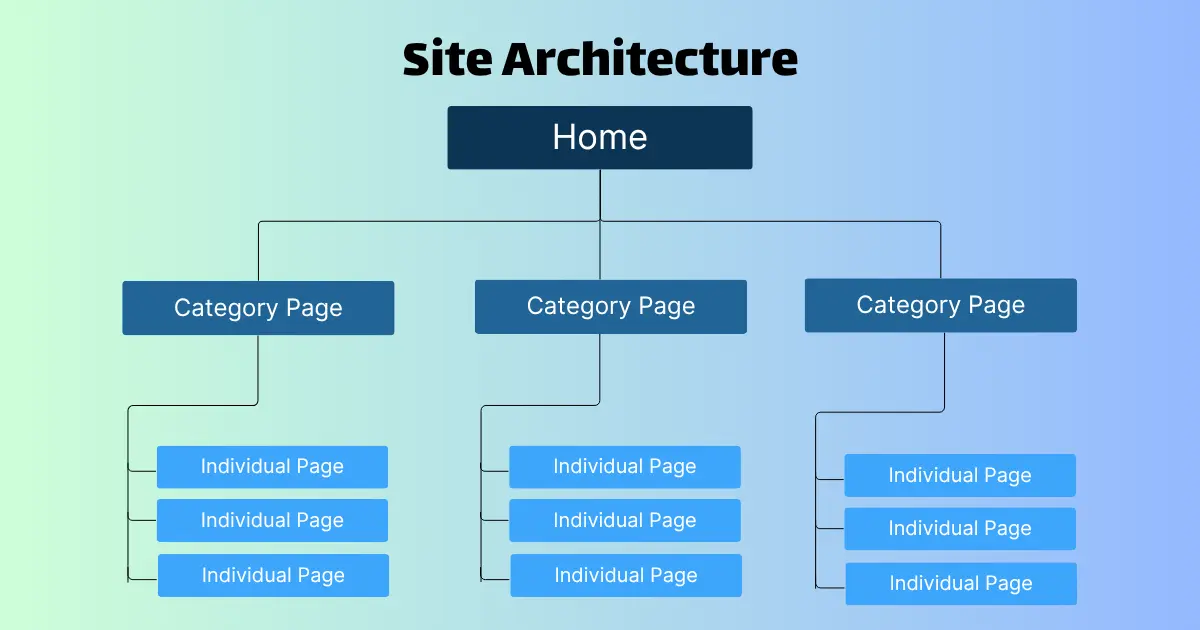When expanding your SEO strategy from local to national, technical SEO becomes the backbone of your success. While keywords and content are important, the technical foundation of your website determines whether search engines can properly crawl, index, and rank your pages for a national audience.
Technical SEO for national campaigns involves optimizing your website’s infrastructure to ensure it meets the requirements of search engines while providing an excellent user experience across the entire country. This goes beyond basic on-page optimization to address the complex technical aspects that influence your site’s visibility on a national scale.
Understanding Technical SEO for National Visibility
Technical SEO forms the foundation upon which all other SEO efforts are built. For national campaigns, this foundation must be particularly robust to support visibility across an entire country.
Why Technical SEO Matters for National Campaigns
National SEO requires a broader approach than local SEO, targeting high-volume keywords relevant to a national audience. These keywords are typically more competitive, making technical optimization crucial for gaining an edge.
A well-structured website helps search engines easily find and understand all your pages. It shows how your site is organized and which pages are the most important. It also makes sure people across the country can quickly load your site on their phones or computers, which keeps them happy and helps your site show up better in search results.
Technical optimization directly impacts your ability to rank for competitive national keywords. When targeting an entire country, even minor technical issues can significantly limit your visibility and prevent you from reaching potential customers.
Key Technical Elements for National SEO
For a successful national SEO campaign, focus on these critical technical elements:
- Site architecture and URL structure
- Website speed and performance
- Mobile responsiveness
- Crawlability and indexation
- Schema markup implementation
- Technical site auditing
Each of these elements plays a vital role in how search engines perceive and rank your site for national search queries.
Site Architecture and URL Structure
A well-structured website with a logical organization helps both users and search engines navigate your content efficiently.
Creating a Flat Site Architecture
For national SEO campaigns, it’s important to implement a flat site architecture where both users and search engines can access any page within four clicks or less. This type of structure allows link authority to flow smoothly from high-authority pages, such as your homepage, to key product or service pages. It also ensures that search engine crawlers can easily find and access all pages on your site, which helps maximize your crawl budget and improves overall site visibility.

Implementing SEO-Friendly URLs
SEO-friendly URLs are crucial for national campaigns. They should establish a logical hierarchy, include relevant keywords, use hyphens to separate words, remove unnecessary numbers, and stay concise and descriptive.
For example, a national retailer might use: www.example.com/womens/outerwear/raincoats/
This URL structure clearly indicates the page’s position in the site hierarchy, making it intuitive for both users and search engines.
How to Optimize Site Architecture for National Campaigns
To optimize your site architecture for national SEO, start by creating a logical category structure that groups related content together. This helps both users and search engines easily navigate your website. Adding breadcrumb navigation is another effective way to show users where they are within your site, improving their experience.
Internal linking should also be used to connect related pages and distribute link equity throughout your website. It’s important to maintain consistent URL patterns to keep your site organized and easy to crawl. Finally, be sure to create an XML sitemap and submit it to search engines to ensure all your pages are properly indexed.
Proper site architecture not only improves SEO but enhances user experience by making navigation intuitive and efficient.
Website Speed and Performance
Page speed is a critical ranking factor that directly impacts both user experience and search visibility.
How does site speed affect national rankings?
Page speed plays a major role in your national SEO performance in several important ways. It serves as a direct ranking factor for search engines, meaning faster websites are more likely to appear higher in search results.
According to recent statistics, 53% of users abandon a website if it takes more than 3 seconds to load, and a one-second delay in mobile load time can result in a 20% drop in conversion rates.
Speed Optimization Techniques
To improve your site speed for national SEO:
- Enable compression using Gzip for CSS, HTML, and JavaScript files larger than 150 bytes
- Minify CSS, JavaScript, and HTML by removing unnecessary characters and spaces
- Reduce redirects in your site structure
- Remove render-blocking JavaScript that delays page rendering
- Optimize images by compressing them without sacrificing quality
Leverage browser caching to store site elements on visitors’ devices

Mobile Performance for National Audiences
With over 60% of global traffic coming from mobile devices, optimizing for mobile is essential for national SEO campaigns.
Mobile optimization works best when content is easy to read with short paragraphs and enough white space. Keep intros brief, avoid popups that block content, and use responsive design so your site looks good on any screen.
Mobile optimization is particularly important since Google uses mobile-first indexing, meaning it primarily uses the mobile version of your site for indexing and ranking.
Technical Crawling and Indexation
For your national SEO campaign to succeed, search engines must be able to discover, crawl, and index all your important pages.
Ensuring Website Crawlability
Crawlability refers to a search engine’s ability to access and explore the content on your website. To improve it, you should create and submit an XML sitemap to search engines and use a clear internal linking structure that helps crawlers navigate your site.
Implementing a robots.txt file is also important, as it guides search engines on which pages to crawl or avoid. It’s essential to fix broken links and redirect chains, and make sure your site doesn’t contain crawl traps or infinite loops that can confuse or block crawlers. Regular technical site audits are necessary to identify and resolve any crawling issues that might prevent search engines from discovering your content.
Addressing Common Indexation Issues
Indexation problems can severely limit your national visibility by preventing important pages from appearing in search results. Common issues include duplicate content spread across multiple pages or domains, which confuses search engines about which version to index. Thin content that offers little value can also hurt indexation, as can the improper use of canonical tags that mislead search engines about the preferred version of a page. Incorrect robots meta directives may unintentionally block pages from being indexed, while slow page load times can waste your crawl budget, limiting how much of your site gets explored. To check for these problems, regularly monitor your indexed pages and potential issues using tools like Google Search Console.
What tools should I use to monitor crawling and indexation?
For effective monitoring of crawling and indexation, it’s important to use a combination of tools that provide detailed insights into your website’s technical performance. Google Search Console allows you to track which pages are indexed and helps identify crawl errors or indexing issues.
Screaming Frog is useful for crawling your site and uncovering technical problems like broken links or duplicate content. Tools like Semrush or Ahrefs help analyze your site structure and reveal opportunities for optimization. Additionally, log file analyzers give you a clear view of how search engine bots are actually crawling your site, which helps pinpoint any areas that may need attention.

Schema Markup for National SEO
Schema markup helps search engines understand your content better and can enhance your visibility in search results through rich snippets.
What schema markup is best for national businesses?
For national businesses, the most beneficial schema types include:
- Organization schema – Consolidates business information into a knowledge panel
- Product schema – Displays product details like ratings and pricing in search results
- Local Business schema (for multi-location businesses) – Provides location-specific information
- FAQ schema – Shows frequently asked questions directly in search results
- How-to schema – Displays step-by-step instructions for relevant queries
Implementing Schema at Scale
For national businesses with multiple locations or products, implementing schema at scale requires a strategic and well-planned approach. It begins with selecting the appropriate schema types that best fit your business model. Many companies use data feed translation services to convert existing data into JSON-LD format, making it easier to manage. Deploying schema through tag management systems such as Google Tag Manager allows for more efficient rollout across large websites.
For businesses with extensive online content, programmatic implementation is often the most effective solution. For instance, one national retailer successfully rolled out schema markup at scale by translating their location and product data into JSON-LD and using Google Tag Manager to deploy it—completing the entire process in just three weeks.
Schema Markup Code Example
Here’s a basic example of Organization schema in JSON-LD format:
<script type="application/ld+json">
{
"@context": "https://schema.org",
"@type": "Organization",
"name": "Your National Business Name",
"url": "https://www.yourbusiness.com",
"logo": "https://www.yourbusiness.com/logo.png",
"contactPoint": {
"@type": "ContactPoint",
"telephone": "+1-800-555-1234",
"contactType": "customer service",
"areaServed": "US"
}
}
</script>

Technical SEO Audit Framework
Regular technical audits are essential for maintaining and improving your national SEO performance.
How to Perform a Technical SEO Audit
To conduct a comprehensive technical SEO audit, start by selecting reliable SEO tools such as Screaming Frog, Semrush, or Ahrefs. Use your chosen tool to crawl your entire website and gather detailed data on its technical performance. Once the crawl is complete, analyze the report to identify common issues like broken links, duplicate content, and redirect errors.
Next, review your Google Search Console data to check for indexing issues or manual actions that may affect your visibility. It’s also important to verify that your Google Analytics is set up correctly, with proper tracking and bot filtering in place. After gathering all insights, organize and prioritize the technical issues based on their impact, and create a clear action plan to address them.
Finally, schedule your next audit to maintain technical health, ideally performing audits once or twice a year.
Priority Technical Issues to Address
When conducting your audit, prioritize these technical issues in order of importance:
- Tracking issues
- Crawling issues
- Indexing issues
- Security issues (HTTPS implementation)
- Response code issues (broken links)
- Mobile optimization issues
- Structured data issues
- Page speed issues

Technical SEO Requirements by Business Type
Different business models have varying technical SEO requirements for national campaigns.
E-commerce vs. Service-Based Business Requirements
| Technical Element | E-commerce Requirements | Service-Based Requirements |
| Site Architecture | Product category hierarchy, faceted navigation | Service-based hierarchy, location pages |
| URL Structure | Product-focused URLs with categories | Service-focused URLs with clear hierarchy |
| Schema Markup | Product, Offer, Review, BreadcrumbList | Service, LocalBusiness, FAQ, HowTo |
| Page Speed | Critical for product pages and checkout | Important for landing pages and contact forms |
| Mobile Optimization | Essential for product browsing and purchasing | Crucial for contact information and booking |
| Technical Challenges | Large inventory, duplicate content, faceted navigation | Service area pages, appointment booking integration |
E-commerce Technical SEO Essentials
E-commerce websites face unique technical SEO challenges when targeting a national audience. Managing large inventories with multiple product variations often leads to issues like duplicate content, especially when similar items have slight differences. Faceted navigation, while useful for filtering products, can create crawl issues if not handled properly. Additionally, product pages with numerous high-resolution images can slow down load times, negatively impacting both user experience and search rankings. Another key challenge is organizing thousands of products into a logical and easy-to-navigate category structure.
To overcome these issues, e-commerce sites should establish a clear and consistent site architecture with well-organized categories and subcategories. Implementing canonical tags is crucial for managing duplicate content that arises from similar or dynamically generated product pages. Using robots.txt and meta robots directives can help control how search engines crawl faceted navigation, preventing unnecessary indexation of duplicate or thin pages. Optimizing product images ensures faster load times, improving both SEO performance and user engagement. Finally, adding product schema markup enhances visibility in search results by enabling rich snippets like ratings and pricing.
Service-Based Business Technical Requirements
Service-based businesses have distinct technical requirements when targeting national SEO. They need to create service-specific landing pages tailored to various offerings and develop location pages for businesses operating in multiple areas. Optimizing for both local and national keywords simultaneously is essential to capture a broader audience. Ensuring mobile-friendliness is critical, as many users search for services on the go.
Additionally, implementing easy-to-use booking and contact features improves user experience and conversion rates.
Technically, service-based businesses should focus on establishing a clear service hierarchy within their site structure to organize content effectively. Location-specific pages must feature unique, relevant content to stand out in search results. Implementing LocalBusiness and Service schema markup helps search engines better understand the business and its offerings.
Maintaining fast site speeds, especially on contact and booking pages, is vital for user satisfaction and SEO performance. Lastly, optimizing content to address both informational and transactional search intent ensures the site meets the needs of users at every stage of their journey.
Mobile Optimization for National Campaigns
With Google’s mobile-first indexing, mobile optimization is no longer optional for national SEO success.
Mobile-First Indexing Requirements
To ensure your site performs well with mobile-first indexing, use responsive design that adjusts seamlessly to all screen sizes. Make sure the content on your mobile site matches the desktop version to maintain consistency. Optimize your pages for fast mobile loading speeds, and design navigation menus and buttons to be easy to tap on touchscreens. Additionally, regularly test your site across various devices and browsers to ensure a smooth and user-friendly experience for all visitors.
Websites optimized for mobile devices are 67% more likely to rank on the first page of Google, making mobile optimization essential for national visibility.
Creating Mobile-Friendly Content
For national campaigns, optimizing your content for mobile means keeping paragraphs short—no longer than five lines on a mobile screen—and breaking up text with clear headings and plenty of white space. Introductions should be brief to quickly deliver the main message, while intrusive popups that interrupt the user experience should be avoided. Using bulleted lists and tables helps make information easy to scan and digest on smaller screens, ensuring your content remains user-friendly and engaging across all devices.

Conclusion: Building a Technical SEO Roadmap
A successful national SEO campaign requires a strong technical foundation. By addressing site architecture, page speed, mobile optimization, crawlability, and schema markup, you can create a solid base for your content and keyword strategies.
To implement these technical SEO principles for your national campaign:
- Start with a comprehensive technical audit to identify issues
- Prioritize fixes based on their impact on crawling, indexing, and user experience
- Develop a logical site structure with SEO-friendly URLs
- Optimize page speed and mobile performance
- Implement appropriate schema markup for your business type
- Monitor technical performance regularly through Google Search Console and analytics
Remember that technical SEO is not a one-time task but an ongoing process of optimization and maintenance. By continuously improving your site’s technical foundation, you’ll support your national SEO efforts and gain a competitive edge in search results.
With these technical SEO strategies in place, your national campaign will have the solid foundation it needs to compete effectively for high-value, nationwide search terms.
How useful was this post?
Click on a star to rate it!
Average rating 5 / 5. Vote count: 1
No votes so far! Be the first to rate this post.










